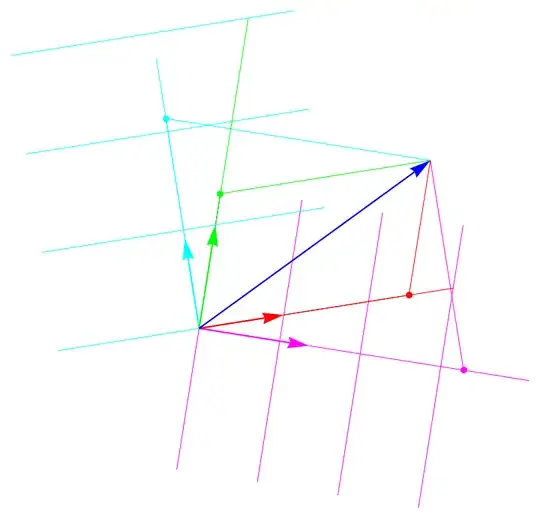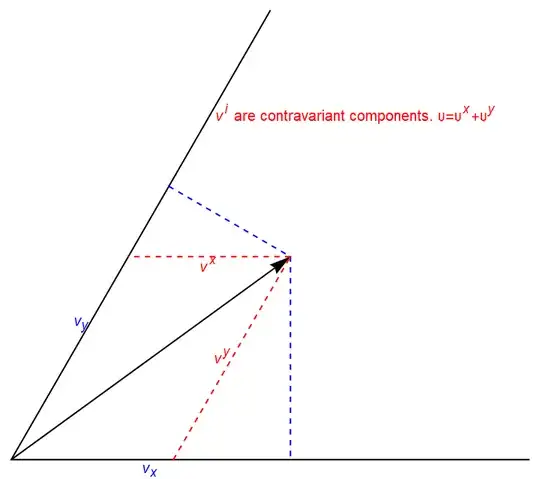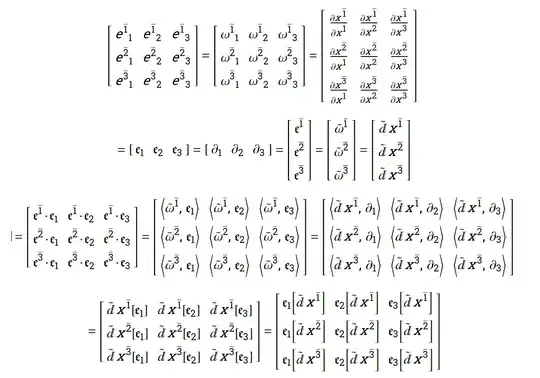The reason I'm asking this is because I am trying to develop a set of notes from my reading of MTW (and Wrede, Menzel, Bergman, etc.).
I represent covariant basis vectors with $\mathfrak{e}_{i}$, or if they are orthonormal $\hat{\mathfrak{e}}_{i}$. In cases where the author is explicitly using the terminology "contravariant basis vector", I use, $\mathfrak{e}^{i}$ and $\hat{\mathfrak{e}}^{i}$ for the dual entities. My desire to represent basis 1-forms using identical with contravariant basis vectors started as a software issue. I don't have a pretty way to consistently represent bold-faced Greek letters with the editors I use. But it has become a matter of principle.
I believe I can continue to use my contravariant basis notation for the basis 1-forms appearing in MTW with impunity. That is, I won't have to go back and change my notes because it turns out that basis 1-forms and contravariant basis vectors are geometrically distinct entities.
I have no way of concisely summarizing my understanding of these concepts. Every author has a different approach to developing the fundamentals of tensor analysis and differential geometry pertinent to applications in physics.
There are two prima facie different "schools".
For example, Menzel and Wrede use dual covariant/contravariant basis vector sets. The MTW school uses covariant basis vectors and their dual basis 1-forms. I understand that basis vectors and basis 1-forms are intended to induce conceptually different notions in the student's mind. As I understand these, the (covariant) basis is represented as an arrow because that depicts the distance along one coordinate curve between points of intersection with other coordinate curves. That is, the distance between "lines" of the coordinate mesh.
Basis 1-forms represent the "density" of intersecting coordinate curves. So an arrow representation is misleading. By this reasoning, depicting the gradient with an arrow is misleading because it is actually a 1-form which represents the density of surfaces of constant value. (There is, however, a signed normal direction to each such surface.)
Contravariant basis vectors are typically concocted in some way to support transformation invariance.
But, to me, basis 1-forms and contravariant basis vectors appear to represent the same commodity with different labeling. For example: if we denote the dual basis 1-forms by $\omega^{j}$, then
$$\mathfrak{e}_{i}\cdot\mathfrak{e}^{j}=\left\langle \mathfrak{e}_{i},\omega^{j}\right\rangle =\delta_{i}^{j} \, .$$
Is this a reasonable assessment? Is there an example situation where identifying basis 1-forms (dual to covariant basis vectors) with contravariant basis vectors (dual to covariant basis vectors) fails?


